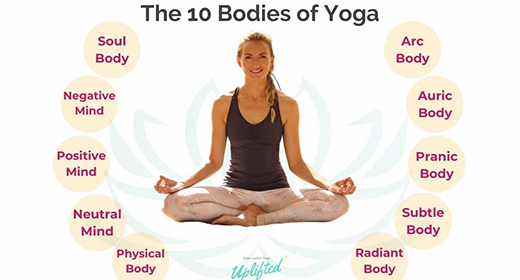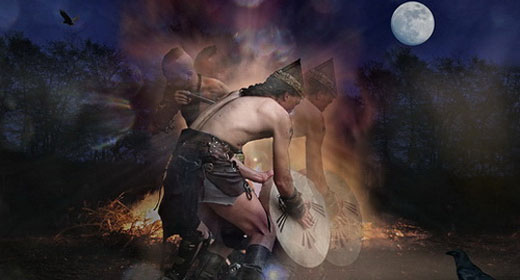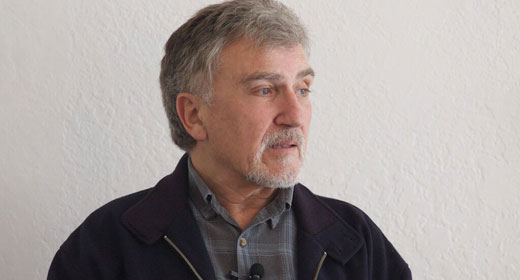by Ken Wilber: Precisely because the ego, the soul and the Self can all be present simultaneously, we can better understand the real meaning of egolessness,
 a notion that has caused an inordinate amount of confusion. But egolessness does not mean the absence of a functional self (that’s a psychotic, not a sage); it means that one is no longer exclusively identified with that self.
a notion that has caused an inordinate amount of confusion. But egolessness does not mean the absence of a functional self (that’s a psychotic, not a sage); it means that one is no longer exclusively identified with that self.
One of the many reasons we have trouble with the notion of egoless is that people want their egoless sages to fulfill all their fantasies of saintly or spiritual, which usually means dead from the neck down, without fleshy wants or desires, gently smiling all the time. All of the things that people typically have trouble with money, food, sex, relationships, desire they want their saints to be without. Egoless sages who are above all that is what people want. Talking heads is what they want. Religion, they believe, will simply get rid of all baser instincts, drives and relationships, and hence they look to religion, not for advice on how to live life with enthusiasm, but on how to avoid it, repress it, deny it, escape it.
In other words, the typical person wants the spiritual sage to be less than a person, somehow devoid of all the messy, juicy, complex, pulsating, desiring, urging forces that drive most human beings. We expect our sages to be an absence of all that drives us! All the things that frighten us, confuse us, torment us, confound us: we want our sages to be untouched by them altogether. And that absence, that vacancy, that less than personal, is what we often mean by egoless.
But egoless does not mean less than personal, it means more than personal. Not personal minus, but personal plus all the normal personal qualities, plus some transpersonal ones. Think of the great yogis, saints and sages from Moses to Christ to Padmasambhava. They were not feeble-mannered milquetoasts, but fierce movers and shakers from bullwhips in the Temple to subduing entire countries. They rattled the world on its own terms, not in some pie-in-the-sky piety; many of them instigated massive social revolutions that have continued for thousands of years.
And they did so not because they avoided the physical, emotional and mental dimensions of humanness and the ego that is their vehicle, but because they engaged them with a drive and intensity that shook the world to its very foundations. No doubt, they were also plugged into the soul (deeper psychic) and spirit (formless Self) the ultimate source of their power but they expressed that power, and gave it concrete results, precisely because they dramatically engaged the lower dimensions through which that power could speak in terms that could be heard by all.
These great movers and shakers were not small egos; they were, in the very best sense of the term, big egos, precisely because the ego (the functional vehicle of the gross realm) can and does exist alongside the soul (the vehicle of the subtle) and the Self (vehicle of the causal). To the extent these great teachers moved the gross realm, they did so with their egos, because the ego is the functional vehicle of that realm. They were not, however, identified merely with their egos (that’s a narcissist), they simply found their egos plugged into a radiant Kosmic source. The great yogis, saints and sages accomplished so much precisely because they were not timid little toadies but great big egos, plugged into the dynamic Ground and Goal of the Kosmos itself, plugged into their own higher Self, alive to the pure atman (the pure I–I) that is one with Brahman; they opened their mouths and the world trembled, fell to its knees, and confronted its radiant God.
Saint Teresa was a great contemplative? Yes, and Saint Teresa is the only woman ever to have reformed an entire Catholic monastic tradition (think about it). Gautama Buddha shook India to its foundations. Rumi, Plotinus, Bodhidharma, Lady Tsogyal, Lao Tzu, Plato, the Bal Shem Tov these men and women started revolutions in the gross realm that lasted hundreds, sometimes thousands, of years, something neither Marx nor Lenin nor Locke nor Jefferson can yet claim. And they did not do so because they were dead from the neck down. No, they were monumentally, gloriously, divinely big egos, plugged into a deeper psychic, which was plugged straight into God.
There is certainly a type of truth to the notion of transcending ego : it doesn’t mean destroy the ego, it means plug it into something bigger. (As Nagarjuna put it, in the relative world, atman is real; in the absolute, neither atman nor anatman is real. Thus, in neither case is anatta a correct description of reality.) The small ego does not evaporate; it remains as the functional center of activity in the conventional realm. As I said, to lose that ego is to become a psychotic, not a sage.
Transcending the ego thus actually means to transcend but include the ego in a deeper and higher embrace, first in the soul or deeper psychic, then with the Witness or primordial Self, then with each previous stage taken up, enfolded, included and embraced in the radiance of One Taste. And that means we do not get rid of the small ego, but rather, we inhabit it fully, live it with verve, use it as the necessary vehicle through which higher truths are communicated. Soul and Spirit include body, emotions and mind; they do not erase them.
Put bluntly, the ego is not an obstruction to Spirit, but a radiant manifestation of Spirit. All Forms are not other than Emptiness, including the form of the ego. It is not necessary to get rid of the ego, but simply to live it with a certain exuberance. When identification spills out of the ego and into the Kosmos at large, the ego discovers that the individual atman is in fact all of a piece with Brahman. The big Self is indeed no small ego, and thus, to the extent you are stuck in your small ego, a death and transcendence is required. Narcissists are simply people whose egos are not yet big enough to embrace the entire Kosmos, and so they try to be central to the Kosmos instead.
But we do not want our sages to have big egos; we do not even want them to display a manifest dimension at all. Anytime a sage displays humanness in regard to money, food, sex, relationships we are shocked, shocked, because we are planning to escape life altogether, not live it, and the sage who lives life offends us. We want out, we want to ascend, we want to escape, and the sage who engages life with gusto, lives it to the hilt, grabs each wave of life and surfs it to the end this deeply, profoundly disturbs us, frightens us, because it means that we, too, might have to engage life, with gusto, on all levels, and not merely escape it in a cloud of luminous ether. We do not want our sages to have bodies, egos, drives, vitality, sex, money, relationships, or life, because those are what habitually torture us, and we want out. We do not want to surf the waves of life, we want the waves to go away. We want vaporware spirituality.
The integral sage, the nondual sage, is here to show us otherwise. Known generally as tantric, these sages insist on transcending life by living it. They insist on finding release by engagement, finding nirvana in the midst of samsara, finding total liberation by complete immersion. They enter with awareness the nine rings of hell, for nowhere else are the nine heavens found. Nothing is alien to them, for there is nothing that is not One Taste.
Indeed, the whole point is to be fully at home in the body and its desires, the mind and its ideas, the spirit and its light. To embrace them fully, evenly, simultaneously, since all are equally gestures of the One and Only Taste. To inhabit lust and watch it play; to enter ideas and follow their brilliance; to be swallowed by Spirit and awaken to a glory that time forgot to name. Body and mind and spirit, all contained, equally contained, in the ever-present awareness that grounds the entire display.
In the stillness of the night, the Goddess whispers. In the brightness of the day, dear God roars. Life pulses, mind imagines, emotions wave, thoughts wander. What are all these but the endless movements of One Taste, forever at play with its own gestures, whispering quietly to all who would listen: is this not you yourself? When the thunder roars, do you not hear your Self? When the lightning cracks, do you not see your Self? When clouds float quietly across the sky, is this not your very own limitless Being, waving back at you?
Reposted from The Journals of Ken Wilber, from Shambhala Publications Inc., Boston. Copyright Ken Wilber, 1998.









































